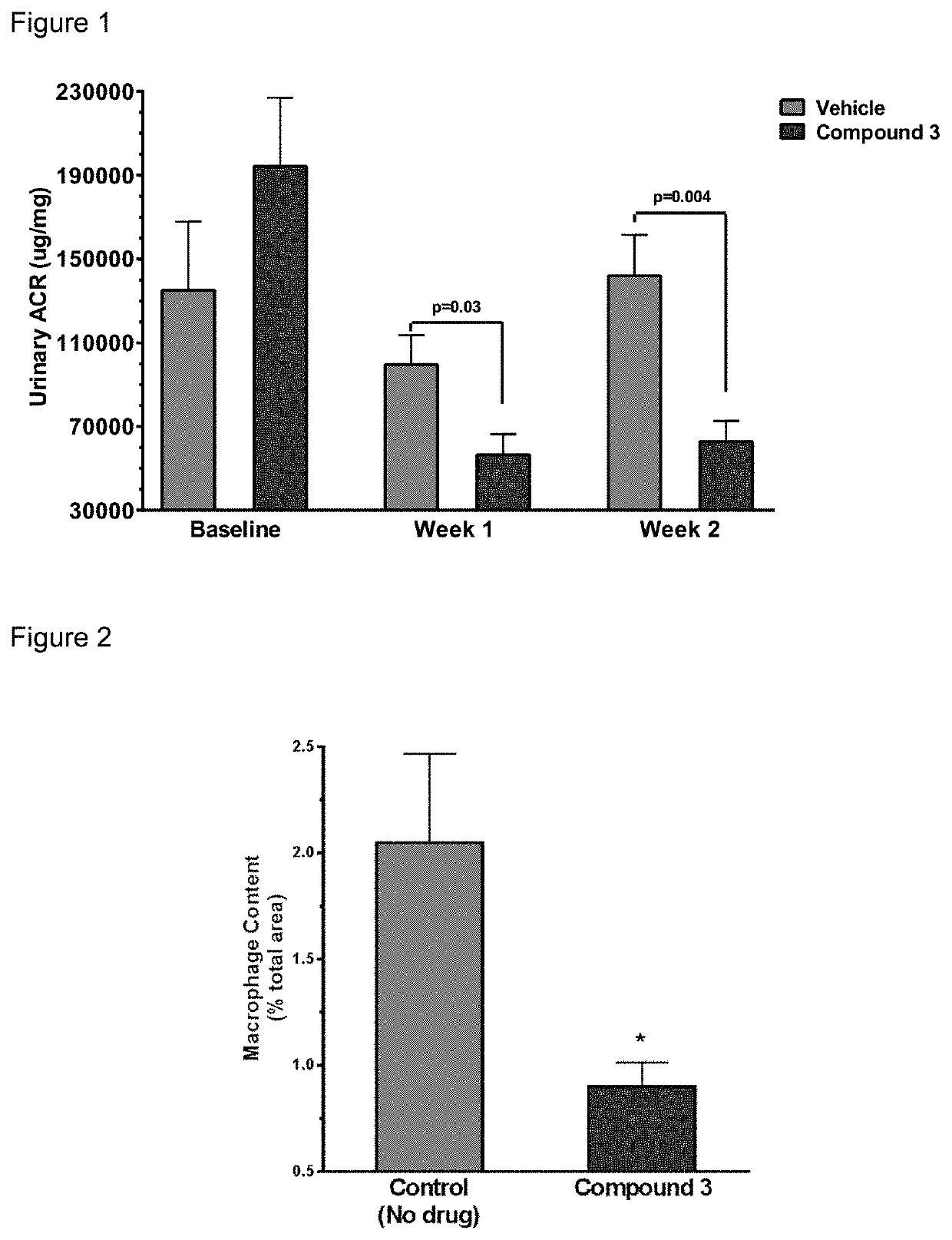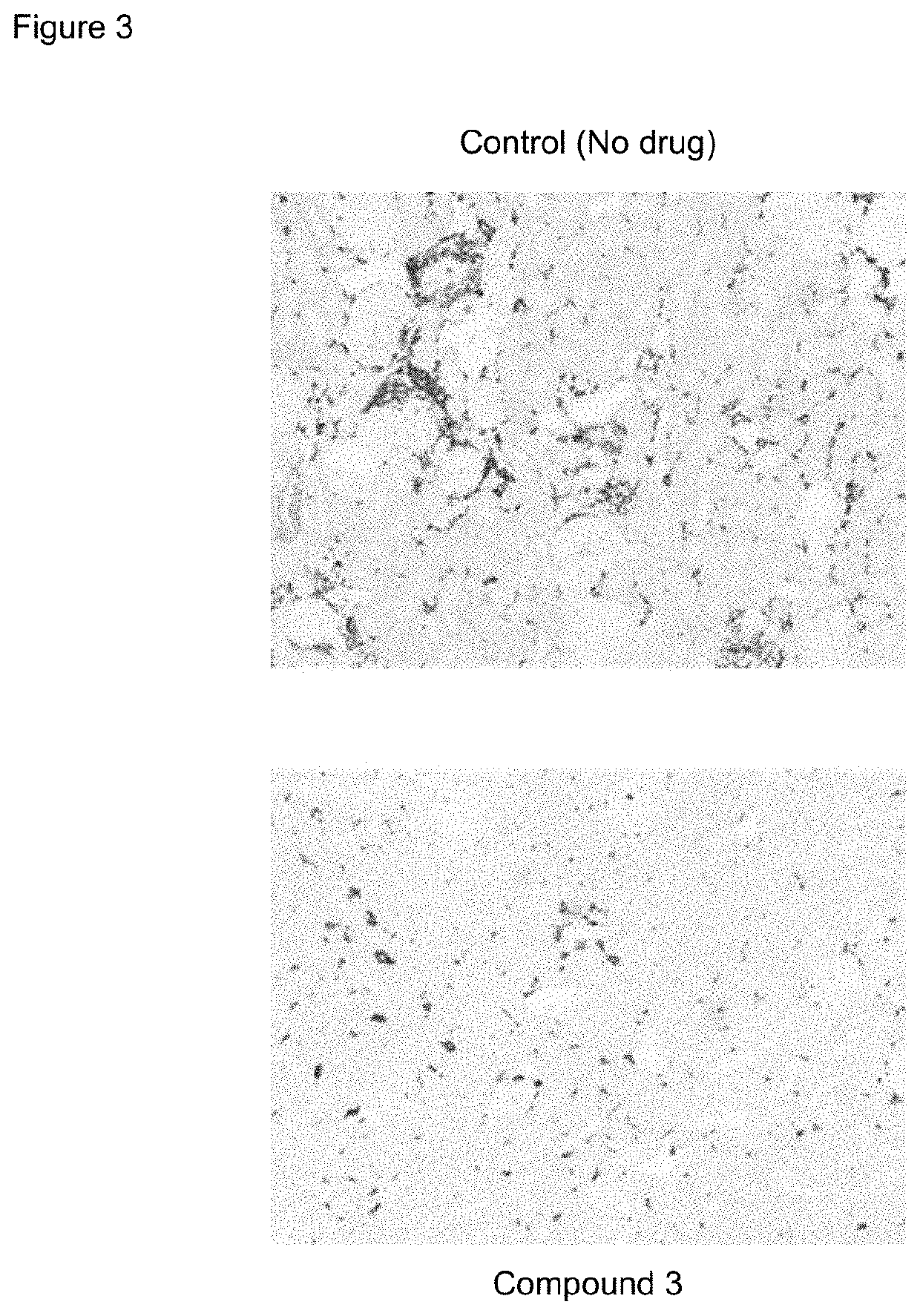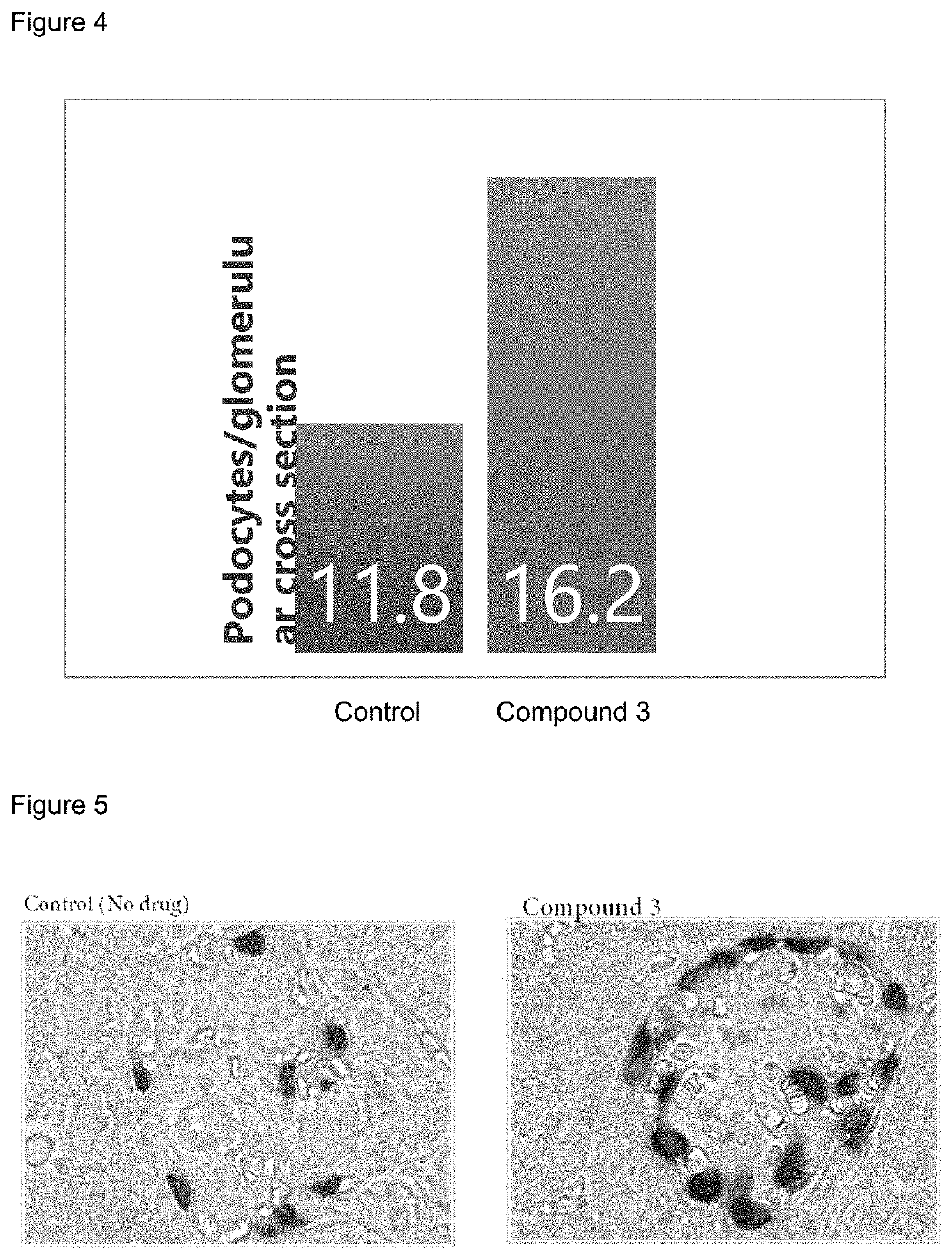Method of Treating Focal Segmental Glomerulosclerosis
a glomerulosclerosis and focal segment technology, applied in the field of treating focal segmental glomerulosclerosis, can solve the problems of progressive loss of kidney function and kidney failur
- Summary
- Abstract
- Description
- Claims
- Application Information
AI Technical Summary
Benefits of technology
Problems solved by technology
Method used
Image
Examples
example 1
nt Kidney Model
[0158]The 5 / 6 remnant kidney 129X1 / SvJ mice was obtained from Jackson Laboratories. The mice were kept on standard chow and had free access to water. The mice surgery was performed in two stages. Under isoflurane anesthesia, two-thirds of the left kidney mass was dissected. After 7 to 10 days, a right unilateral nephrectomy was performed. Six weeks after the 5 / 6 nephrectomy, the mice were randomized for the study. Compound 3 and its vehicle were dosed subcutaneously once daily at 100 mg / kg formulated in 1% HPMC. 6 animals were used for each group.
[0159]Urine samples were collected at weeks one and two by individually housing the mice in metabolic cages for 18 hours. Urinary albumin was measured by ELISA (Bethyl Labs, Montgomery, Tex.), and the urinary albumin excretion rate (UAER) was calculated as micrograms per 24 hours. Urinary creatinine was measured by mass spectrometry. The albumin to creatinine ratio (ACR) was calculated as micrograms of albumin per milligram o...
example 2
n Nephropathy Model
[0167]The experiment was performed in female Balb / c mice (Jackson Laboratories). The mice were kept on standard chow and had free access to water. 7.5 mg / kg Adriamycin (Selleck Chemicals) or saline (control) was injected in a tail vein in isoflurane-anesthetized animals at day 0. Compound 1 and its vehicle (1% HPMC) were dosed subcutaneously once daily at 90 mg / kg formulated in 1% HPMC. Candesartan and its vehicle (H2O) were dosed orally once daily. Twelve animals were used for each group.
[0168]Urine samples were collect at week one and two by individually housing mice in metabolic cages for 18 h. Urinary albumin was measured by ELISA (Bethyl Labs, Montgomery, Tex.), and the urinary albumin excretion rate (UAER) was calculated as micrograms per 24 hours. Urinary creatinine was measured by mass spectrometry. The albumin to creatinine ratio (ACR) was calculated as micrograms of albumin per milligram of creatinine.
[0169]FIG. 8 shows that compound 1 as single agent an...
example 3
nt Kidney Model with Combination Treatment
[0171]The 5 / 6 remnant kidney 129X1 / SvJ mice was obtained from Jackson Laboratories. The mice were kept on standard chow and had free access to water. The mice surgery was performed in two stages. Under isoflurane anesthesia, two-thirds of the left kidney mass was dissected. After seven to ten days, a right unilateral nephrectomy was performed. Three to six weeks after the 5 / 6 nephrectomy, the mice were randomized for the study (n=12 per group). Compound 3 and its vehicle were dosed subcutaneously once daily at 100 mg / kg formulated in 1% HPMC. Candesartan (AK Scientific) and its vehicle (H2O) were dosed once daily orally at 5 mg / kg. Two animals per group were euthanized at weeks 1, 2, and 3 to perform histology and IHC.
[0172]Urine samples were collected at week one, two and three by individually housing the mice in metabolic cages for 18 hours. Urinary albumin was measured by ELISA (Bethyl Labs, Montgomery, Tex.), and the urinary albumin excr...
PUM
| Property | Measurement | Unit |
|---|---|---|
| size | aaaaa | aaaaa |
| pharmaceutical composition | aaaaa | aaaaa |
| light microscopy | aaaaa | aaaaa |
Abstract
Description
Claims
Application Information
 Login to View More
Login to View More - R&D
- Intellectual Property
- Life Sciences
- Materials
- Tech Scout
- Unparalleled Data Quality
- Higher Quality Content
- 60% Fewer Hallucinations
Browse by: Latest US Patents, China's latest patents, Technical Efficacy Thesaurus, Application Domain, Technology Topic, Popular Technical Reports.
© 2025 PatSnap. All rights reserved.Legal|Privacy policy|Modern Slavery Act Transparency Statement|Sitemap|About US| Contact US: help@patsnap.com



